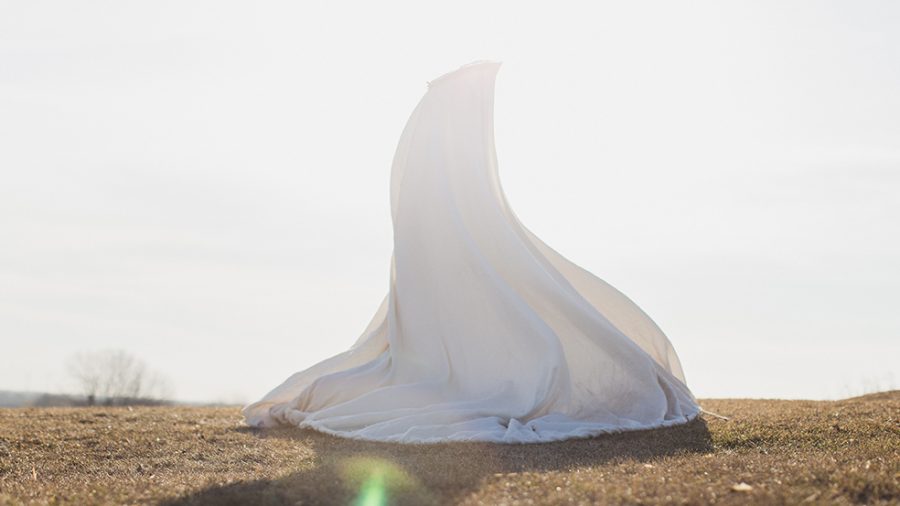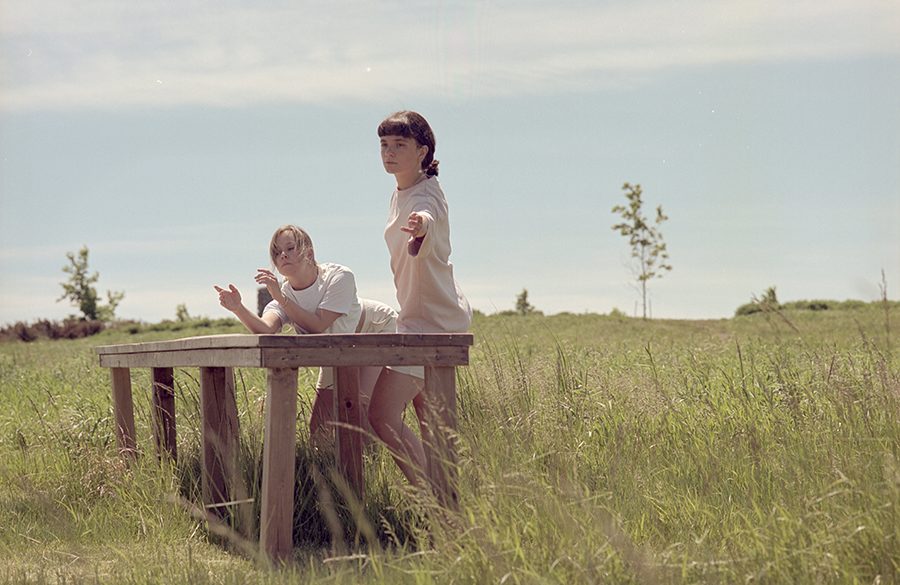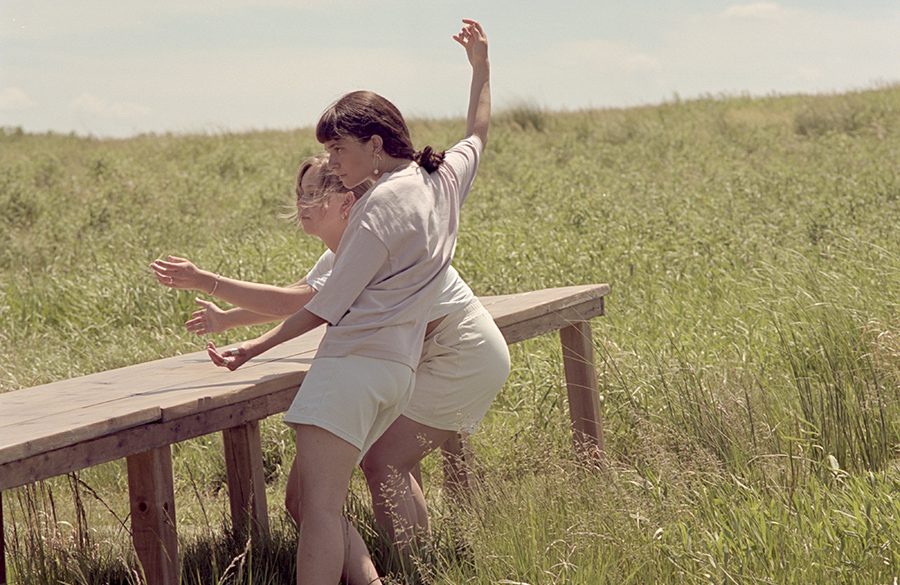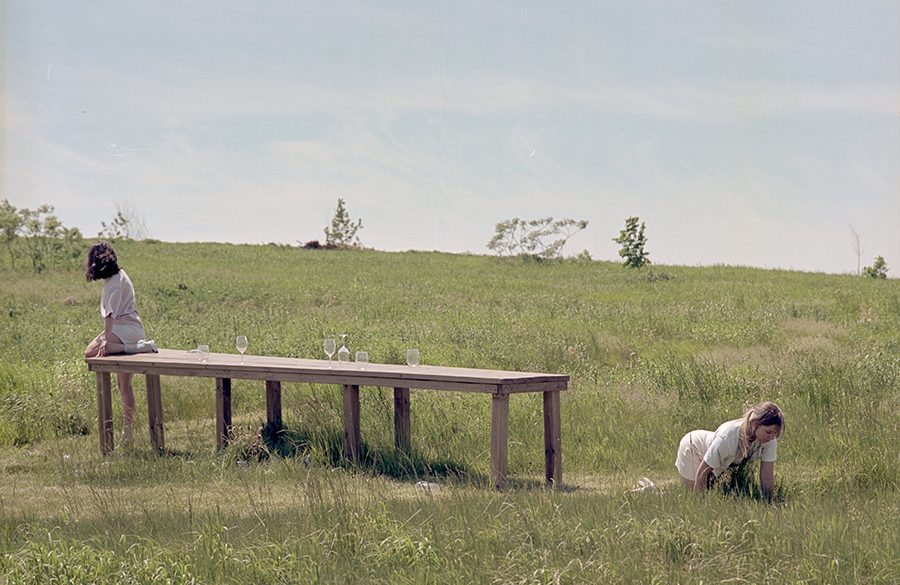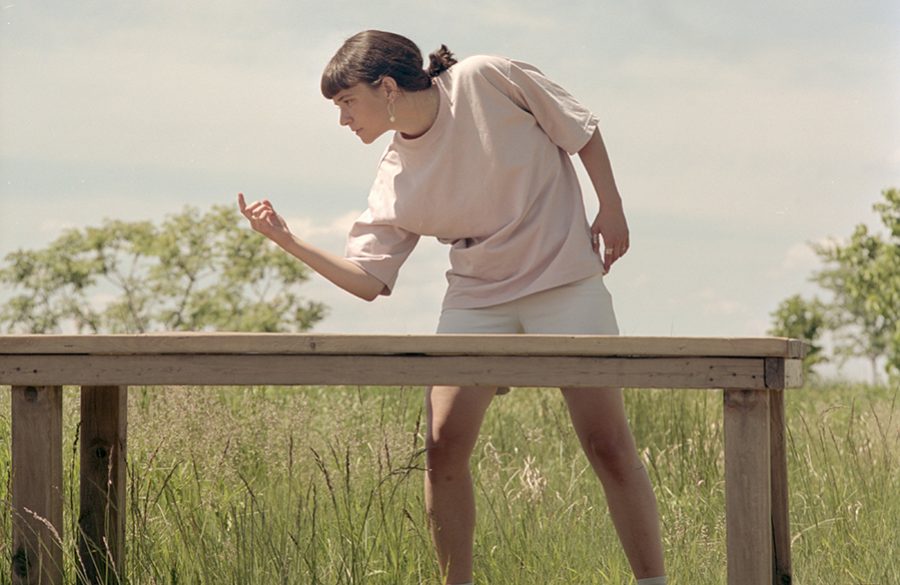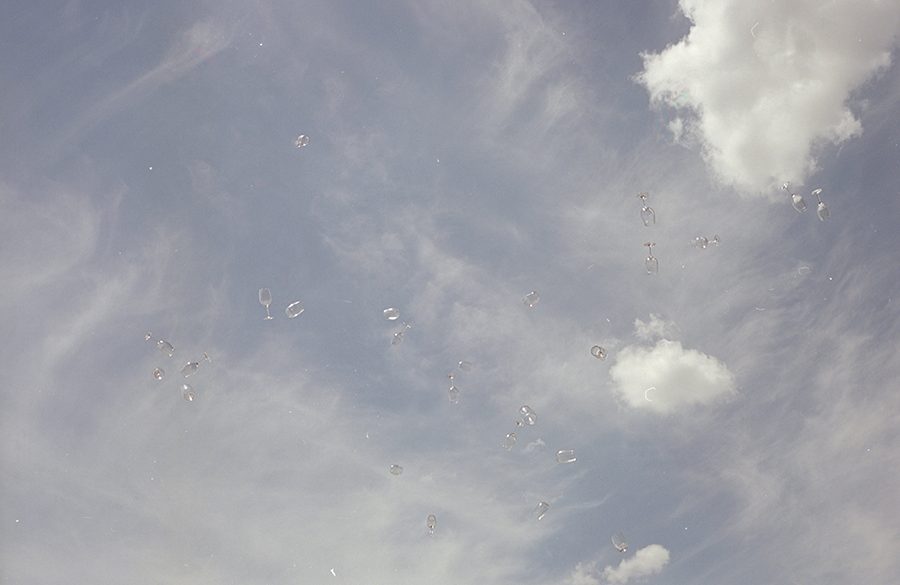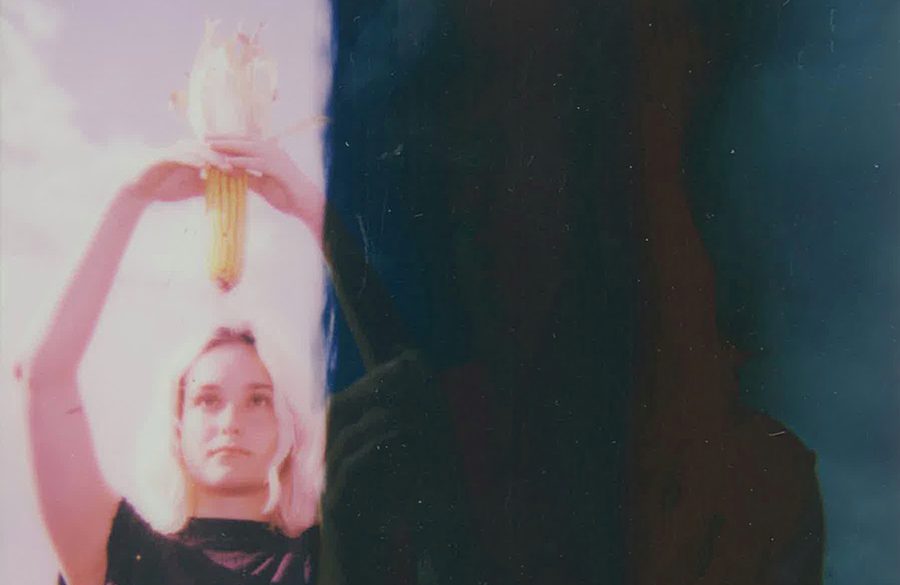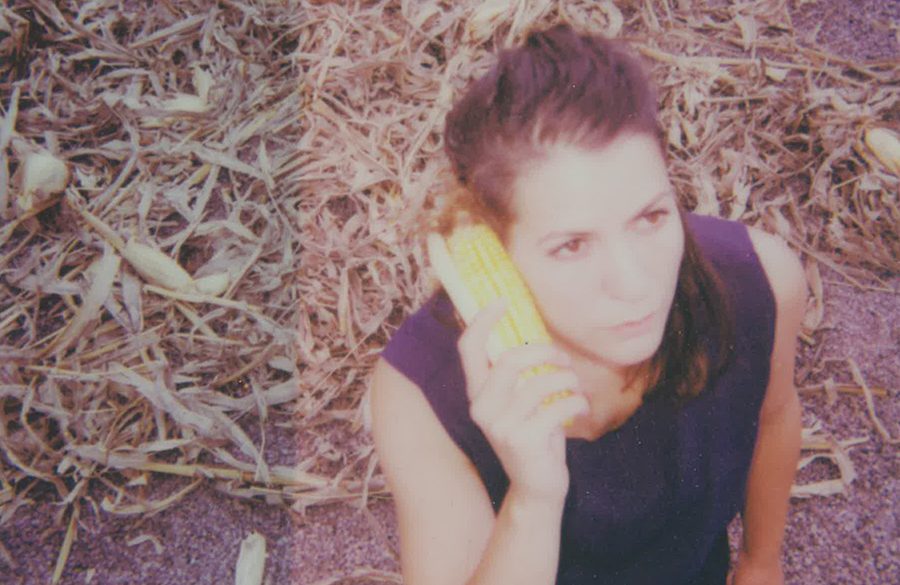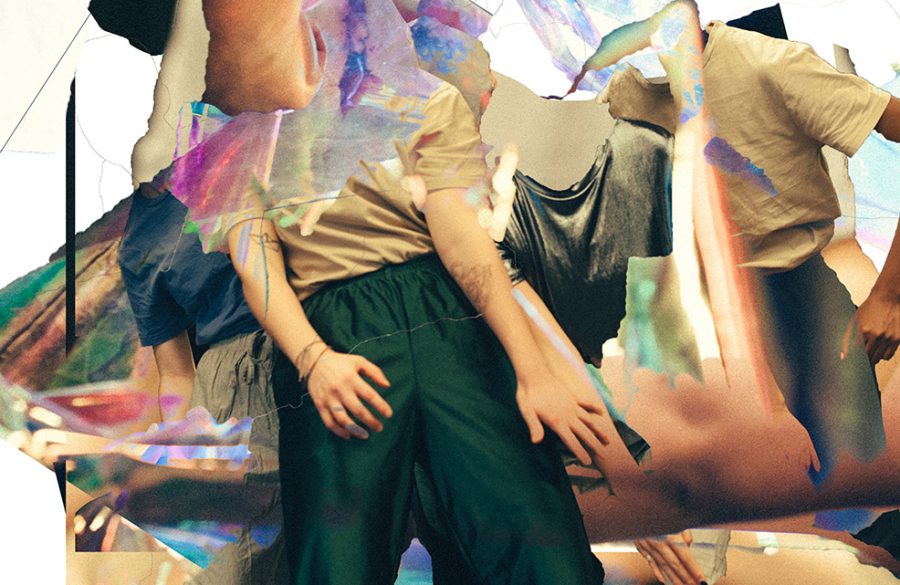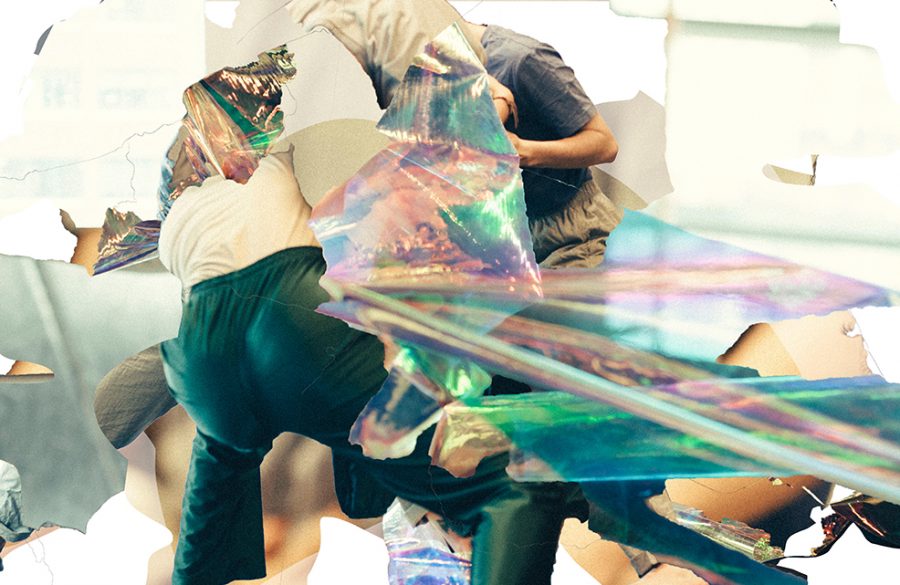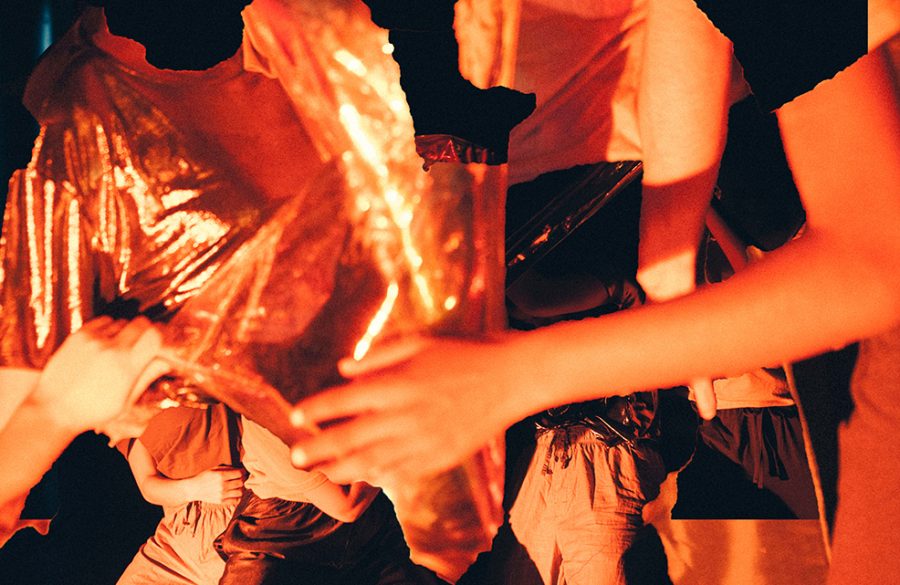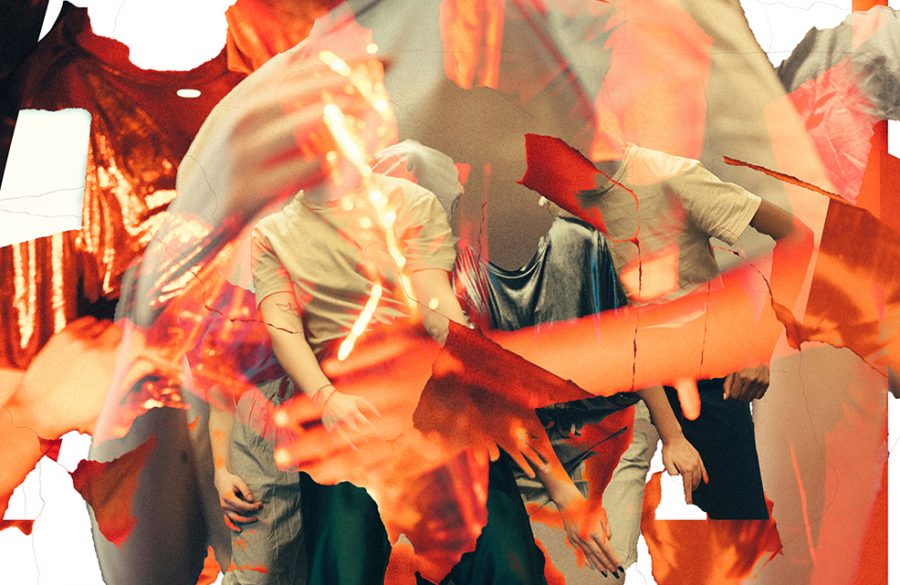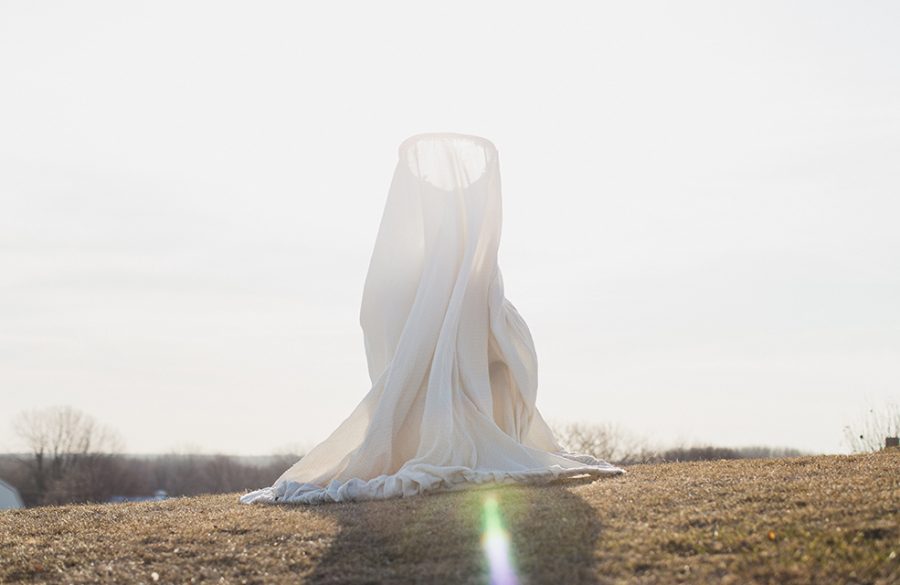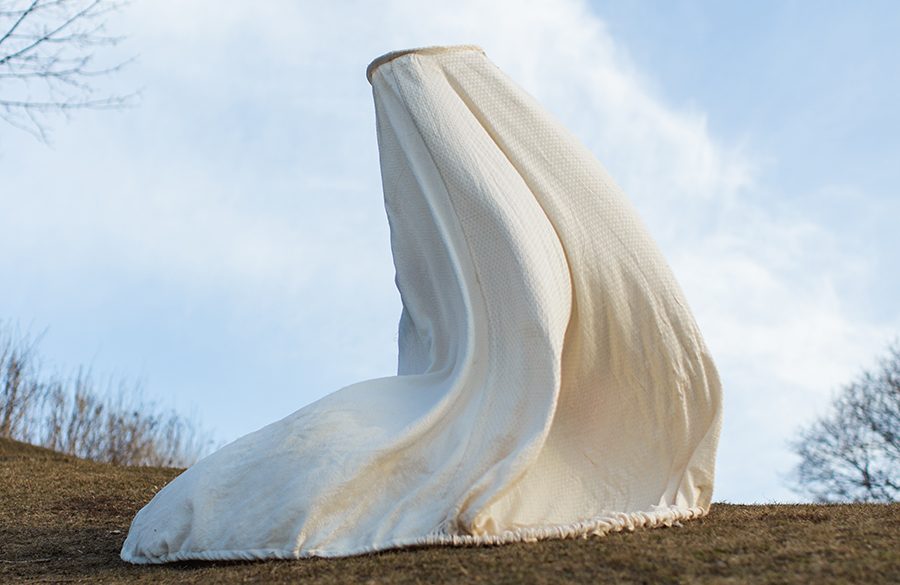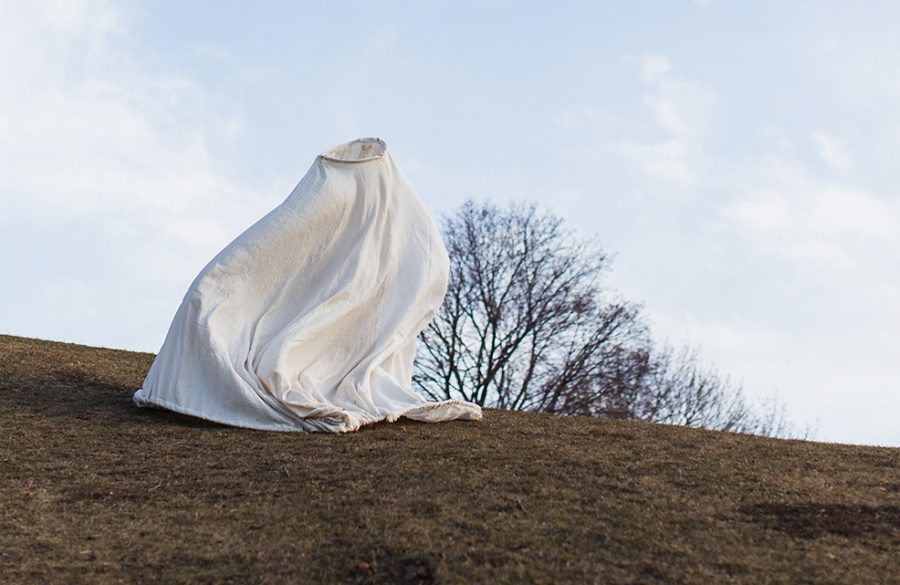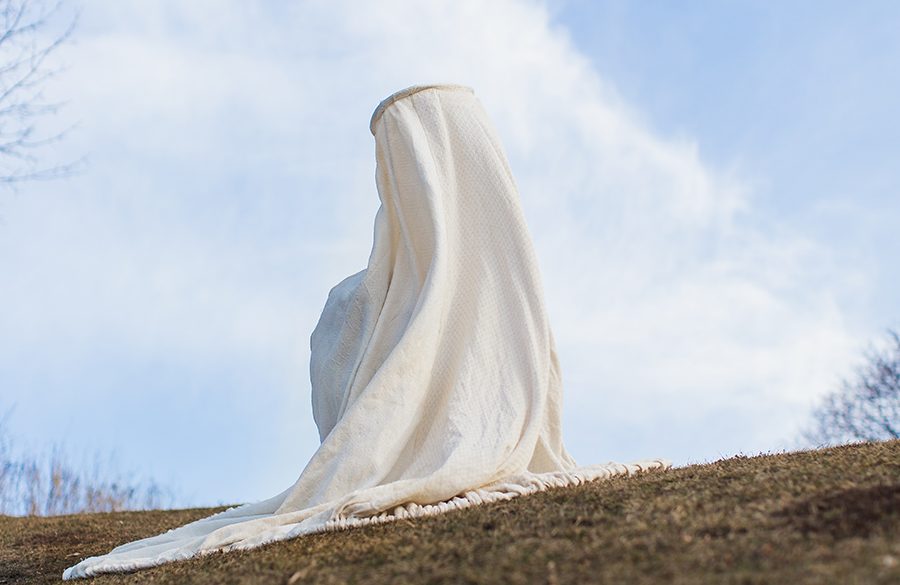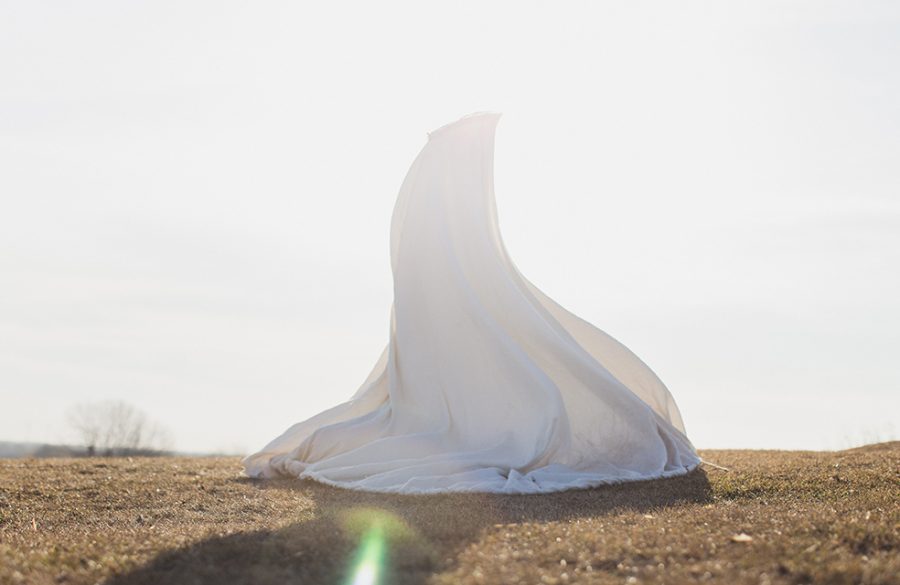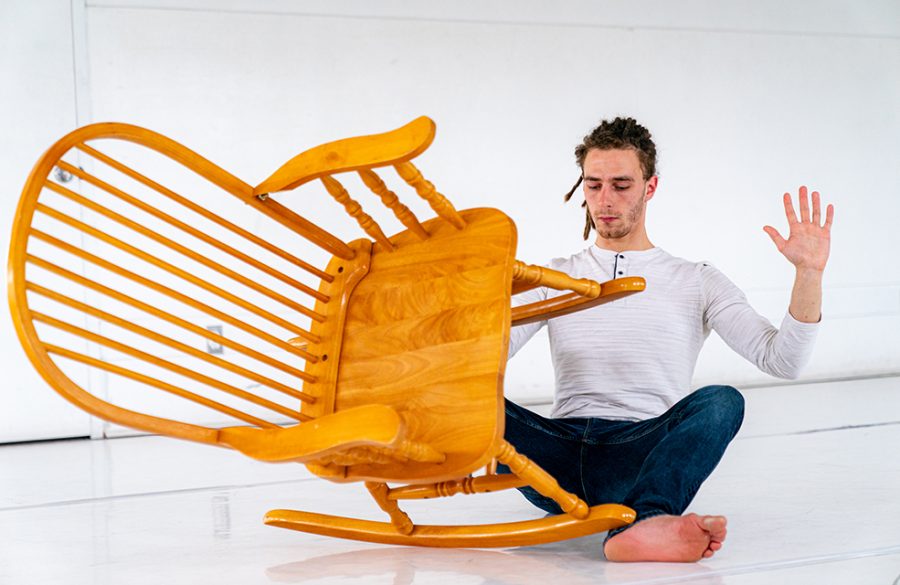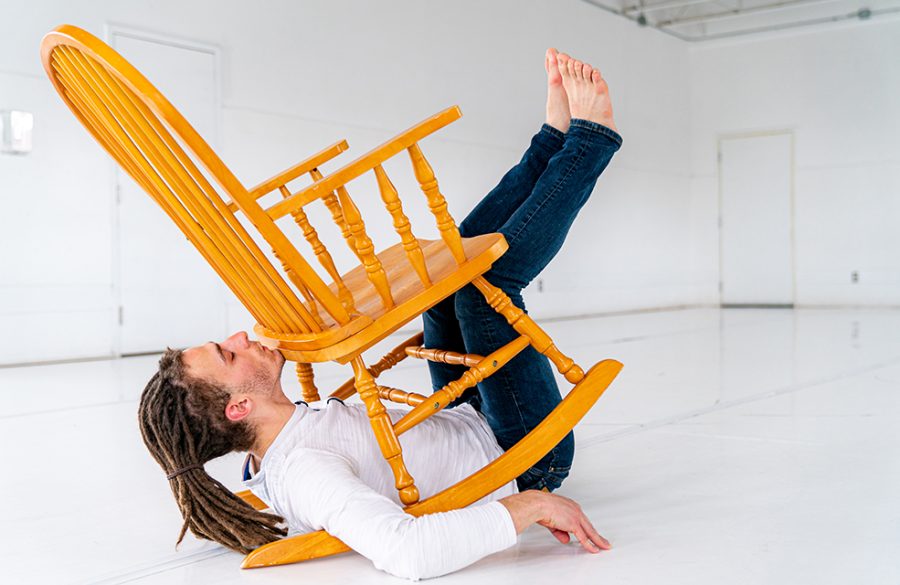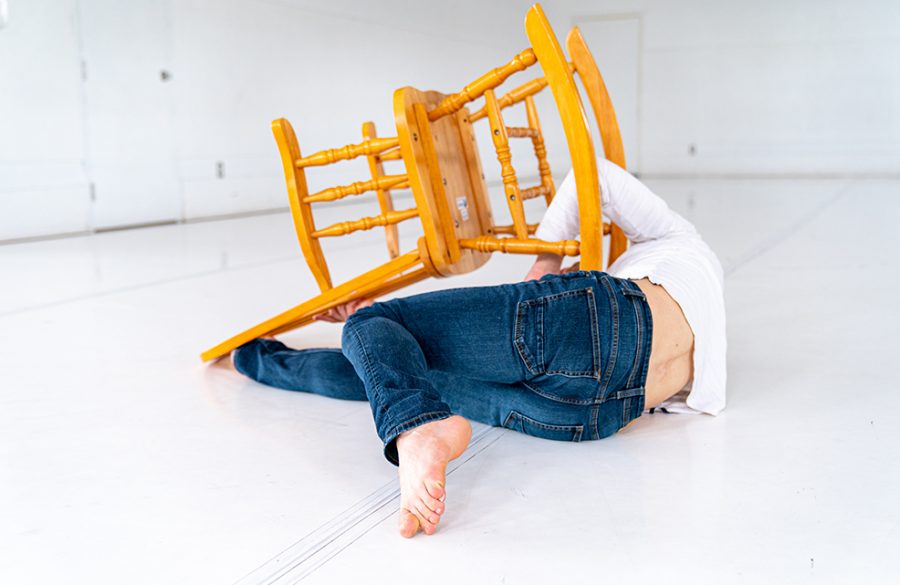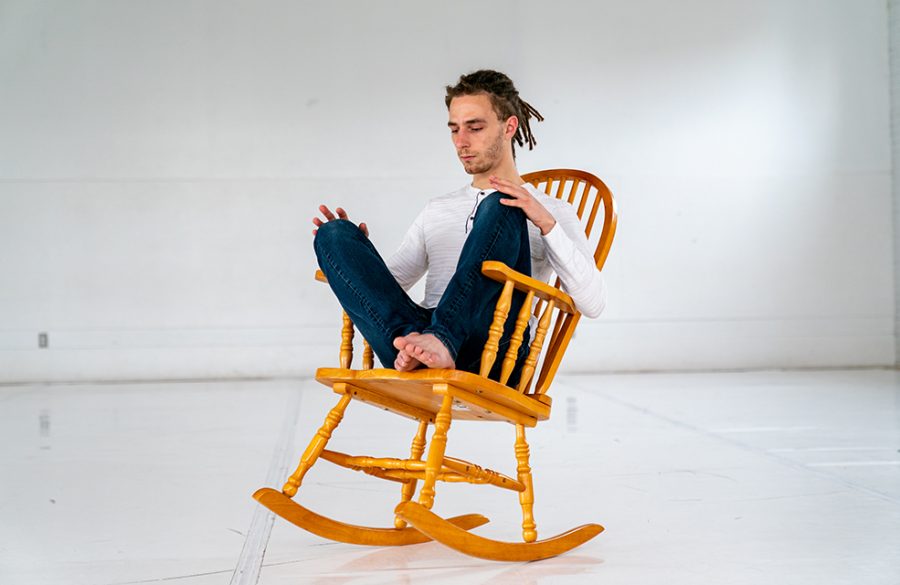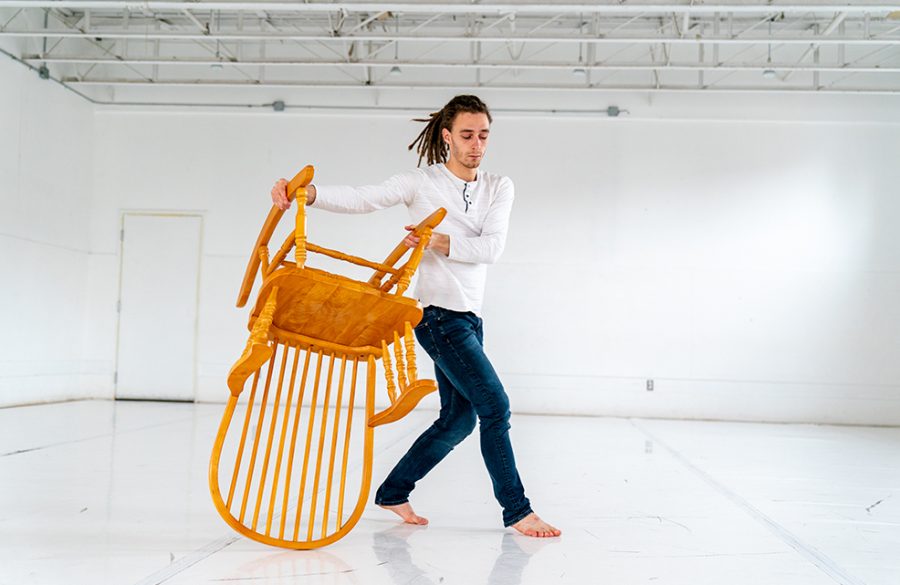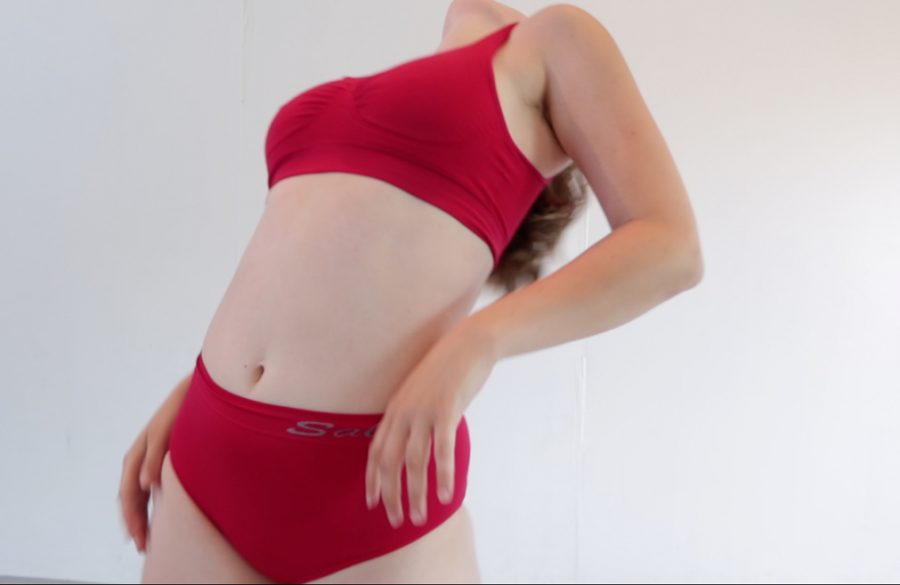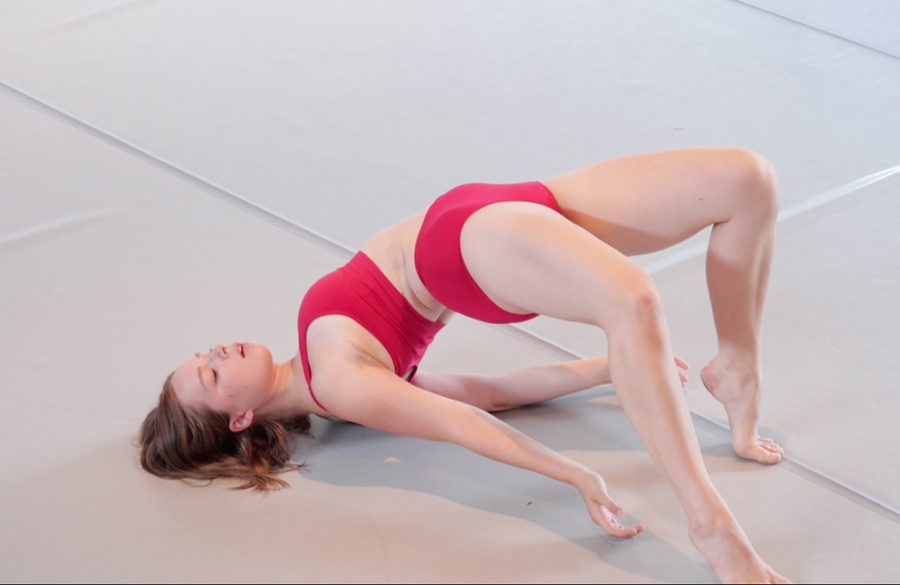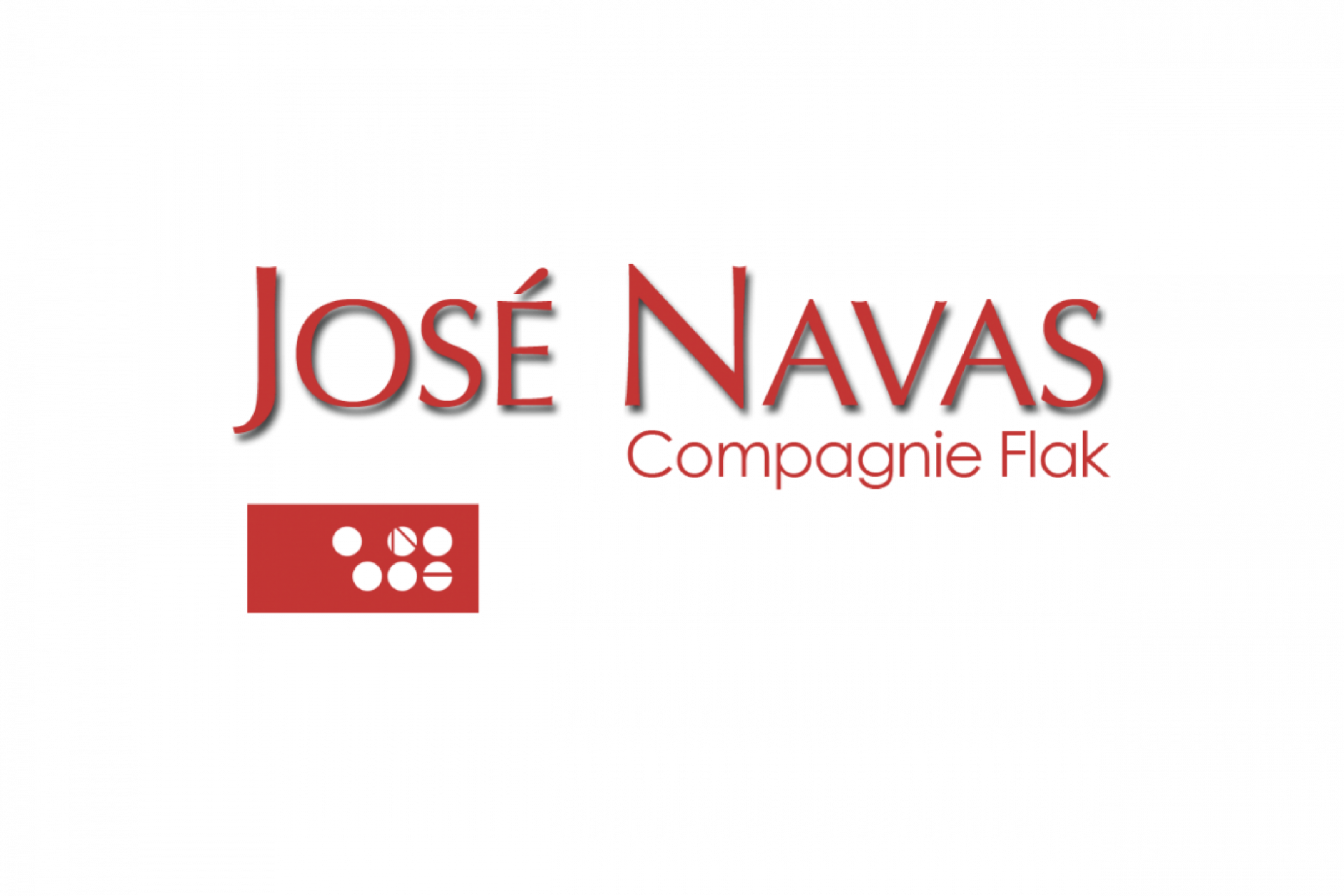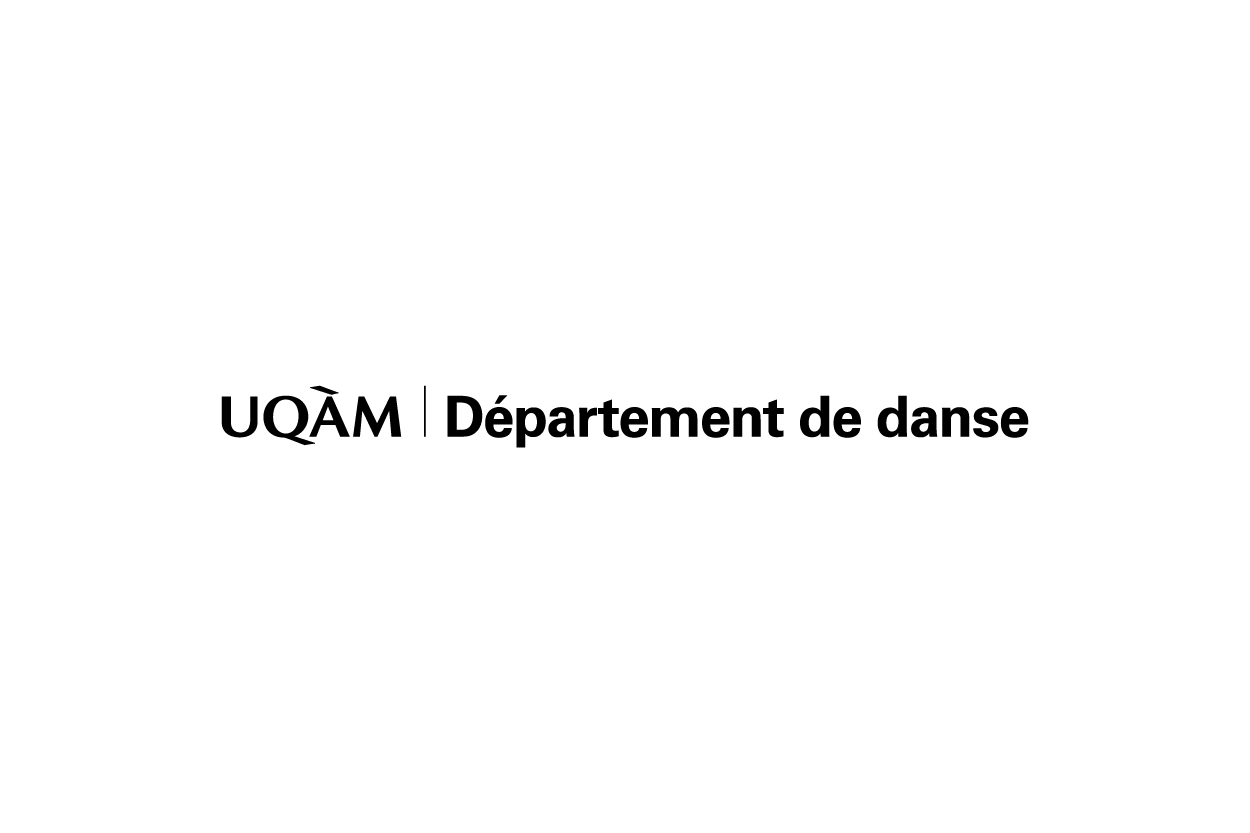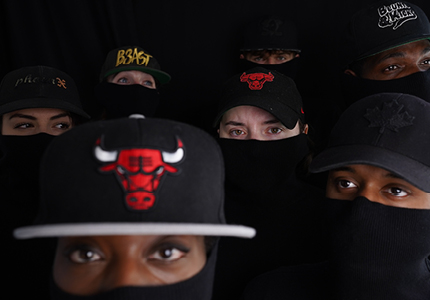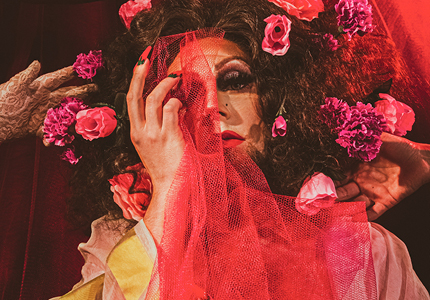Danses Buissonnières Spring 2022
Lila Geneix + Pamela Aubé & Châtelaine Côté-Rioux + Justine Bellefeuille + Mélissa Juillet + Matéo Chauchat + Camil Bellefleur
APRIL 9, 2022 - 7PM
APRIL 10, 2022 - 4PM
APRIL 11 & 12, 2022 - 7PM
-
Discussion with the artists on April 11
The perfect occasion to discover new trends in contemporary dance, this popular annual event introduces the public to the next generation of Québec dancemakers. A jury composed of artists Claudia Chan Tak, Alexandra “Spicey” Landé, Sébastien Provencher, Anne-Flore de Rochambeau and Jessica Serli selected 7 young local choreographers among 35 candidates. For many of them, it is their first time presenting work in a professional setting. It is with much anticipation that we rekindle this tradition since there’s never a dull moment with this eclectic program of short and sweet pieces!
The order of the pieces is subject to change.
Lila Geneix (UQAM)
Conjurer la (S)Cène
In the middle of a mysterious enclosed setting, a lively fresco combines playfulness with seduction: two women are engaged in a strange rite, a decorum from another time. From the top of their perches, they draw a mutant or hermetic picture of etiquette, perhaps both at the same time. Their bodies, carrying unconscious debts, languish and pursue each other on a mobile playground. Witnessing this non-event, the public is caught in a ceremonial merry-go-round, voyeur of one last (S)Cène.
Choreographer Lila Geneix
Performers Alice Marroquin-Éthier, Adèle Morrissette
Performer at the beginning of the process Anna Erbibou
Scenographer Augustin Binette
Composer Laure Anderson
Outside eye Matthew Taylor
Artistic advisor Léa Noblet Di Ziranaldi
Costume advisor Laurence PB
Technical coordinator and lighting designer Sylvie Nobert
Lighting designer Lee Anholt
Originally from France, Lila Geneix graduated in 2020 from UQAM. During her dance training, she enriched her choreographic background with Danièle Desnoyers, David Albert-Toth & Emily Gualtieri, Julien Blais, and Catherine Gaudet. Catherine Gaudet has definitively marked her way of conceiving the body in choreographic work. In 2019, she joined the company Danse Carpe Diem/Emmanuel Jouthe as a performer (Écoute pour voir, Corps de Texte, Vega) and took part in several cultural mediation projects (Et si on dansait ?, Danza Familia). Since her arrival in Québec, she has had the opportunity to collaborate with Sarah Dell’Ava (O, O2), Pricilla Guy (Hiatus), Danièle Desnoyers (Compagnonnage 21, Compagnonnage 22). Alongside her career as a performer, she develops her practice as a choreographer. Fascinated by games of distortion of meaning, she draws from ancient works and chooses the body as a vector of images.
Alice Marroquin-Éthier affirms her interest for performance with dance troupe EXIT 505, in which she first performs under Marie-Ève Albert, and then Anne Thériault in collaboration with Simon-Xavier Lefebvre. After working with these three artists, Alice chooses to further her performance training as an undergrad dance student at UQAM, from which she graduates in 2020. Throughout her studies, artists and professors Manon Levac, Todd L. Stone, Geneviève Dussault, Danièle Desnoyers, Catherine Gaudet as well as David Albert-Toth and Emily Gualteri teach her much. Alice is notably interested in the critical thinking that the performer must exercise.
Adèle Morrissette began her studies in modern and classical dance at Cégep de Saint-Laurent. In order to gain as much experience as possible, she enrolled in the Bachelor in Dance Education at UQAM, which she concluded in 2021. She has had the chance to perform in the creations of Catherine Gaudet (Paradis, 2019) and Parts+Labour_Danse (Render, 2019). With the guidance of her teachers (Hélène Duval, Emmanuelle Beaudoin-Bourrassa, Julien Blais), Adèle performs in several pieces at Passerelle 840. The winner of a scholarship for the Faculty of Arts at UQAM, she is currently doing a master’s degree in dance.
Anna Erbibou began dancing at the age of two in France. She pursued her training, mainly in ballet and modern jazz, until she turned 18. After moving to Montréal in 2017, she joined the bachelor’s program in contemporary dance at UQAM, in performance. She discovered a new style and a new aesthetic, thanks to her collaborations with Catherine Gaudet and Parts+Labour_Danse, but also thanks to the artistic projects she participated in during her bachelor’s degree. She is now preparing to enter the professional training program offered by the Kibbutz Contemporary Dance Company.
Augustin Binette is a young artist who graduated in visual and media arts from UQAM. His work takes the form of installations, sculptures, performances, and scenography. He seeks to establish a relationship of equals between his works and the spectators, rejecting the idea of the savant artist and the innocent spectator. He has often collaborated in the creation of dance and theatre performances as a scenographer. His work has been exhibited on several occasions, notably at Passage à découvert (UQAM) and parcomètre V, in addition to a solo exhibition at CANIF.
Born in France, Laure Anderson has been a self-taught sound designer and musician since 2011. Her passion for the performing arts was born in 2013, when she joined a theatre company as an actress. She also becomes a sound designer/composer and plays on several Parisian stages. In 2019, Laure joins the Creation and Production program at the National Theatre School of Canada to perfect her skills. A visual artist since her youth, curious about different artistic practices, her aesthetic is multidisciplinary: she is interested in various forms of scenic arts (theatre, dance, museum, performance). A graduate of the ÉNT, she has written four compositions/sound designs for directors such as Marie-Ève Milot, Gabrielle Lessard, Frédéric Dubois, and Martin Faucher. She accomplished all this with the help of her coaches Ludovic Bonnier, Antoine Berthiaume, Jean Gaudreau, and Nancy Tobin.
With several decades in film production involving multidisciplinary interests under his belt, heavily influenced by world cinema, Matthew Taylor’s work is centred around the visual arts – drawing, illustration, painting, and design – though always in pursuit of story and narrative. Originally from Toronto, Matthew has made Montréal his home for the past six years after having lived in Europe and Africa, and he continues to focus on his visual art practice in his studio in Mile-End.
Originally from France, Léa Noblet Di Ziranaldi trained at the Conservatoire de Lyon and the Université Lumière Lyon 2 before moving to Québec, where she obtained a bachelor’s degree in dance performance at UQAM in 2018. The following year, she worked as a dancer with companies such as MAYDAY – Mélanie Demers, La Mazane, and Sarah Dell’Ava. In 2020, she co-founded Le Bercail, a nomadic community practice space for Montréal’s movers and shakers, and joined the collective Les Berceurs du temps as a participant in dance projects open to all.
After studying photography, Sylvie Nobert became interested in lighting for the stage, for contemporary dance in particular. She now designs and does technical direction for independent choreographers, as well as for the Danses Buissonnières series at Tangente. She works regularly in Montréal’s maisons de la culture, and has also been technical director for the Printemps de la Danse tour.
Lee Anholt moved to Montréal in 1990 after completing a BFA in Contemporary Dance at Simon Fraser University. His work was produced in Montréal, Toronto, and Vancouver. In 1995, he began gravitating towards the technical field. Lee was the technical director and lighting director on tour for Montréal Danse and José Navas/Compagnie Flak for many years and also had the chance to work with many great creators in dance as well as theatre: Peggy Baker, Louise Lecavalier, and Denis Marleau (UBU), to name a few. Presently, Lee is the technical and production director for Danse-Cité. He also creates lighting for theatre, music, and especially dance.
Conjurer la (S)Cène proposes a poetic interpretation of Leonardo da Vinci’s Ultima Cena (1495-1498). This choreographic work draws from the Renaissance masterpiece to extract a new narrative. Imbued with performative practice, I treat the body as the vector of a motivation. From the premovement, I seek to have the bodies molded, melted, to join the image and dissipate the symbolism of this (s)cene. I tend to release a plurality of directions through the invocation of a common imagination. Playfulness, a key notion in this process, has allowed me to build a playground in which the performers respond to rules while defying expectations of fatality.
Pamela Aubé & Châtelaine Côté-Rioux (UQAM)
Théorie Popcorn
In a cloud of waves is an infinite quantity of solitudes. The centrifugal force exerts its weight while latent desires awake. POP! Hearts swell and shells fragment. The volume of the air tries to maintain the balance, but the fundamental principles break up into convex and concave particles whose relationships shift, but remain. Gravity sets in. We move because we’ve been waiting for so long. We crack under pressure. In spite of ourselves.
Choreographers and performers Pamela Aubé, Châtelaine Côté-Rioux
Sound designer Erwan Cosnuau-Polewska
Technical coordinator and lighting designer Sylvie Nobert
Lighting designer Lee Anholt
Originally from the South Shore of Montréal, Pamela Aubé has been a member of a children’s pop group since she was a teenager. She then taught herself interior design, work she did for over 14 years as a project manager. Her ambivalent feeling towards pop and her desire for minimalism stemming from her past experiences influences her choreographic choices when she registers for the creation profile of the bachelor in dance at UQAM at the age of 30. Passionate about choreography, she approaches it with passion and sensitivity. She takes pleasure in using her own laughter as an indicator of meaning and enjoys staging tinged by her background in design. Her favourite themes are social identity and conditioning. Strangely, her creations seduce us with a eurythmic that reveals twisted and uncoordinated bodies.
Châtelaine Côté-Rioux has a bachelor’s degree in contemporary dance from Université du Québec à Montréal (2020). Her body project mainly tends towards a research of sensorial textures, a fascination with the power of the imagination, and an obsession with gravity. She loves digging into ideas, turning them every which way, and pushing them to their limits. Positioning her human and artistic research on a relationship with resonance, collaboration and benevolence are always at the centre of her approach. She wishes to participate in blurring the boundaries of art and gives it the status of a quest for meaning, one where thought and feeling meet.
Erwan Cosnuau-Polewska works on many fronts in music, as a songwriter, composer, performer, sound designer, and director. A graduate from Collège Lionel-Groulx in popular song performance (2017) and in composition and arrangement (2018), he made it to the national finals of Cégeps en spectacle that same year and received the LOGIQ-FIMU prize, which brought him to sing in Belfort, France. He then graduated from École nationale de la chanson (2019-2020) and began working on a self-produced EP while participating in musical and visual projects, in electro-acoustic music, and sound design.
After studying photography, Sylvie Nobert became interested in lighting for the stage, for contemporary dance in particular. She now designs and does technical direction for independent choreographers, as well as for the Danses Buissonnières series at Tangente. She works regularly in Montréal’s maisons de la culture, and has also been technical director for the Printemps de la Danse tour.
Lee Anholt moved to Montréal in 1990 after completing a BFA in Contemporary Dance at Simon Fraser University. His work was produced in Montréal, Toronto, and Vancouver. In 1995, he began gravitating towards the technical field. Lee was the technical director and lighting director on tour for Montréal Danse and José Navas/Compagnie Flak for many years and also had the chance to work with many great creators in dance as well as theatre: Peggy Baker, Louise Lecavalier, and Denis Marleau (UBU), to name a few. Presently, Lee is the technical and production director for Danse-Cité. He also creates lighting for theatre, music, and especially dance.
Furniture and objects are meticulously chosen and arranged. Somewhere between the imaginary and the concrete, we mechanically perform a series of daily actions. But what would happen if time and gravity acted differently? In this poetic research, our bodies are transformed by the impact of sounds, spatial tensions, and our strange relationship with objects. Our respective paths evolve in parallel to each other, yet they cross, merge, and are influenced by the same external forces. But what are we talking about? Simple daily contingencies, social pressure, fate, or physical laws? Whether it is about the centrifugal force of the sun that guides the trajectory of the earth or about a microwave that acts on the shell of a burst corn kernel, the work leaves room for multiple imaginative interpretations.
Justine Bellefeuille (Concordia)
OVERLOAD
Harassment; being a woman. There is a rage and a desire to express this injustice. A complex and visceral discomfort. This piece is an abstraction of this reality. The performers are changing over time. Their rage intensifies. The iridescent paper at their feet is a veil of softness and nuances that soon becomes strength, rage, and power due to the movements imposed by the bodies. Tension is created to give a feeling of discomfort. The dancers’ rage grows within, becoming so intense that the body spontaneously contracts.
Choreographer Justine Bellefeuille
Performers Madeleine Bellefeuille, Jasmine Bouchard, Cassandra Michaud, Camille Mougenot
Technical coordinator and lighting designer Sylvie Nobert
Lighting designer Lee Anholt
Originally from Trois-Rivières, Justine Bellefeuille graduated from Concordia University in contemporary dance in 2020 and is currently completing a major in studio arts at the same institution. She is involved in various cultural organizations in her region, such as the Festival International de DANSEncore and the Biennale nationale de sculpture contemporaine. In 2018, Justine created Comme Je Vois in collaboration with Jasmine Bouchard, Madeleine Bellefeuille, and Catherine Bellefleur, which was presented during the Urbaloko event held by the Corporation des événements de Trois-Rivières. In 2021, she was part of Dans nos veines, la sève et la rosée, a contemporary dance piece choreographed with Nadège St-Arnaud, Madeleine Bellefeuille, and Jasmine Bouchard. In her creative practice, Justine is sensitive to feminist issues. Moreover, she tries to organically combine contemporary dance with visual arts. She is also fascinated by the power of the image and the relationship it can have with the body.
Born in Trois-Rivières, Madeleine Bellefeuille gets involved in the arts from a young age. She comes from a family of musicians, though it is dance that first piqued her curiosity, and she has since decided to pursue it fully. Sensitive and committed, she is distinguished by her strong stage presence and love of theatrical dance. As a graduate of École de danse contemporaine de Montréal, she has had the opportunity to work with Virginie Brunelle, Isabelle Poirier, Clara Furey, Jamie Wright and O Vertigo, and is currently working with the Bouge de là dance company for Kaléidoscope, a show for young audiences. Also, she collaborates with many dance artists on new projects in Mauricie and Montréal, and transmits her passion for this art through teaching.
Originally from Trois-Rivières and established in Montréal since 2015, Jasmine Bouchard graduated from École de danse contemporaine de Montréal. There, she worked with choreographers José Navas, Jacques Poulin-Denis, Helen Simard, Manuel Roque, as well as with members of the RUBBERBANDance company. For three years, she has been involved in various artistic projects, including Pulpeux, choreographed by Justine Bellefeuille, as well as the Fly project, directed by Katia-Marie Germain in 2021. Jasmine is also interested in multidisciplinary arts, including music, visual arts, and video.
Originally from Saint-Léon-le-Grand (QC), Cassandra Michaud began taking ballet and hip hop classes at the age of 8, participating in several competitions each year. A true passion for dancing was born, which led Cassandra to pursue studies in that field. She graduated from Cégep de Drummondville in dance and completed a major in contemporary dance at Concordia University. As an artist, she works with sensations a lot and pays a lot of attention to details.
Camille Mougenot is a Canadian originally from France. At the age of 15, she discovered street dances such as hip hop and popping. She continued her dance training at Cégep de Saint-Laurent and later integrated the contemporary dance program at Concordia University. Her choreographic creation Dyptique was selected and presented during the opening night of the Art Matters festival. She has worked with choreographers Martin Messier, Milan Gervais as well as David Albert-Toth and Emily Gualtieri. She also participated in short films and some music videos.
After studying photography, Sylvie Nobert became interested in lighting for the stage, for contemporary dance in particular. She now designs and does technical direction for independent choreographers, as well as for the Danses Buissonnières series at Tangente. She works regularly in Montréal’s maisons de la culture, and has also been technical director for the Printemps de la Danse tour.
Lee Anholt moved to Montréal in 1990 after completing a BFA in Contemporary Dance at Simon Fraser University. His work was produced in Montréal, Toronto, and Vancouver. In 1995, he began gravitating towards the technical field. Lee was the technical director and lighting director on tour for Montréal Danse and José Navas/Compagnie Flak for many years and also had the chance to work with many great creators in dance as well as theatre: Peggy Baker, Louise Lecavalier, and Denis Marleau (UBU), to name a few. Presently, Lee is the technical and production director for Danse-Cité. He also creates lighting for theatre, music, and especially dance.
Harassment is difficult to explain. When we witness this kind of situation, a visceral feeling takes control of the body. For this creation, we wanted to explore this rage in a way that would make it powerful and that would transform it in a form of empowerment. Once rage takes control of the body, how does it express itself? Does rage lead to denunciation of harassment? We explored how this frustration is transcribed in the body and how it influences other individuals to move forward and bring changes. Discussions were generated to share and understand our different experiences. It is a way of nourishing this rage and the energy of creation. Understanding, listening, and being sensitive to everyone’s experience has allowed us to create an abstract piece that lends itself to various nuanced interpretations.
Mélissa Juillet (UQAM)
« Mi » « Ma »
I express my love for life.
I play with dancing, clowning, and singing.
I take a risk with these skills that I use.
I accept the life within me.
My body is its vehicle.
I listen to what it tells me.
I symbolize life through several doors within me.
I have fun opening them and discovering what’s behind.
To stand on my own two feet, I cut the umbilical cord.
I assert myself to be at the service of life.
I express what is bigger than me, bigger than my parents, than my ancestors.
Choreographer and performer Mélissa Juillet
Artistic advisor Raphaëlle Renucci
Technical coordinator and lighting designer Sylvie Nobert
Lighting designer Lee Anholt
Mélissa Juillet graduated in Contemporary Dance from UQAM. She continued to improve her skills by experimenting with different artistic approaches at Studio 303. She is passionate about world music and dances that fit into her practice of dance, song, and musical improvisation. The discovery of clown art with Rémi Jacques reached her childlike heart, and she wants to express herself and to blend it with her dance style. She is a carpenter and a hatha yoga teacher. Greatly inspired by her multiple professions, she developed her choreographic and performance signature in connection with nature, an infinite resource.
Originally from Ajaccio in Corsica, Raphaëlle Renucci is immersed in the world of classical music from an early age, studying cello and piano for twelve years in various regional conservatories in France. After her Certificate in Choreographic Studies from the Conservatoire de Bordeaux and a university degree in Sports Sciences, she joins UQAM’s Dance Department and then École de danse contemporaine de Montréal, where she performs works by José Navas, Victor Quijada, Helen Simard, Jacques Poulin-Denis, and Manuel Roque. Raphaëlle collaborates with various companies and choreographers, including Compagnie Voix & Omnipresenz (France), Andrew Skeels, and Cirque du Soleil (Manon Oligny).
After studying photography, Sylvie Nobert became interested in lighting for the stage, for contemporary dance in particular. She now designs and does technical direction for independent choreographers, as well as for the Danses Buissonnières series at Tangente. She works regularly in Montréal’s maisons de la culture, and has also been technical director for the Printemps de la Danse tour.
Lee Anholt moved to Montréal in 1990 after completing a BFA in Contemporary Dance at Simon Fraser University. His work was produced in Montréal, Toronto, and Vancouver. In 1995, he began gravitating towards the technical field. Lee was the technical director and lighting director on tour for Montréal Danse and José Navas/Compagnie Flak for many years and also had the chance to work with many great creators in dance as well as theatre: Peggy Baker, Louise Lecavalier, and Denis Marleau (UBU), to name a few. Presently, Lee is the technical and production director for Danse-Cité. He also creates lighting for theatre, music, and especially dance.
I am inspired by anthropological and psychological readings, my listening to and observation of humans. Their subjective sharing of their birth and life brings me questions and answers.
I am dedicated to bringing tales, legends, myths, and rituals back into our lives and letting them guide us. In the body of all living things, bodily knowledge of the origin is available.
With this first choreographic essay, I create gestures that relate to the expression of life and to affirmation.
I integrate voice: it is linked to breath, to the first movement of the body brought into the world, and to the original act that lets the world in.
I created this huge costume that protects the link between the pelvis and the feet, between giving birth and becoming. It symbolizes the act of being born, our anchoring to the earth, the sacred space of the body.
Matéo Chauchat (EDCM)
Misérable
Misérable is a contemplative piece that stages the intimate, physical, and evolving relationship between a rocking chair and a body. Sometimes abstract, sometimes concrete, their many interactions raise questions about power, cohabitation, and interdependence. Simultaneously used as an object of comfort, support and limitation, the chair is the centre of gravity of the poetic world in which the dancer evolves. The individual is a receptacle, a conductor, a manipulator of what could appear as the fruit of his invention, but which he prefers to consider a partner.
Choreographer and performer Matéo Chauchat
Artistic advisor and rehearsal director Cara Roy
Artistic advisor and composer Manuel Roque
Technical coordinator and lighting designer Sylvie Nobert
Lighting designer Lee Anholt
Originally from France, Matéo Chauchat is a contemporary dance choreographer and performer established in Montréal since 2014. He graduated in 2017 from École de danse contemporaine de Montréal and has since worked as a performer for choreographers Sarah Dell’Ava, Sylvain Émard, Élian Mata, and Martin Messier. Listening and sensitivity form the basis of his work ethic, which he tries to transmit through the act of creation. As a young choreographer, he uses the creative process as a tool for fostering encounters and exchanges between artists, collaborators, and the public. He creates works that are both politcal and sensitive, and that question the subjectivity of the individual. He has had the opportunity to present his piece Sillons at VOUS ÊTES ICI (2017) and No_Name at the event Visite Libre (2017), at the festival SOIR (2018), and Hors-Lits Montréal (2019).
Cara Roy is a professional Montréal-based dancer originally from New Brunswick. Since graduating from École de danse contemporaine de Montréal in 2016, Cara has worked with choreographers Sylvain Émard, Ariane Boulet, Martin Messier, Sarah Dell’Ava, and Hélène Remoué. Cara’s study of Fighting Monkey with Alanna Kraaijeveld, and Authentic Movement with Sarah Dell’Ava have greatly influenced her personal practice. She is passionate about investigating the sensitive, expressive, and highly physical capacity of the body. Wanting to feed her desire to share, Cara also facilitates intergenerational cultural mediation activities and teaches many classes and workshops across Montréal and Fredericton (NB).
Along with his career as a performing artist, Manuel Roque founded Cie Manuel Roque in 2013. Since then, he has created Data (2014), a solo exploring the mutation of matter presented at Usine C, at the FTA 2015, and on an international tour. The solo bang bang (2017) was presented at the FTA 2017 and was awarded the Prix pour la meilleure œuvre chorégraphique 2017 at Les Prix de la Danse de Montréal. His latest solo creation, SIERRANEVADA, was presented at the FTA in 2021. His creative universe focuses on the breeding of contemporary languages, the achievement of a kinesthetic virtuosity, and the research of an upstanding presence. Concerned with the contemporary human condition, his work aims to open consciousness and to propose sensitive and poetic artistic propositions.
After studying photography, Sylvie Nobert became interested in lighting for the stage, for contemporary dance in particular. She now designs and does technical direction for independent choreographers, as well as for the Danses Buissonnières series at Tangente. She works regularly in Montréal’s maisons de la culture, and has also been technical director for the Printemps de la Danse tour.
Lee Anholt moved to Montréal in 1990 after completing a BFA in Contemporary Dance at Simon Fraser University. His work was produced in Montréal, Toronto, and Vancouver. In 1995, he began gravitating towards the technical field. Lee was the technical director and lighting director on tour for Montréal Danse and José Navas/Compagnie Flak for many years and also had the chance to work with many great creators in dance as well as theatre: Peggy Baker, Louise Lecavalier, and Denis Marleau (UBU), to name a few. Presently, Lee is the technical and production director for Danse-Cité. He also creates lighting for theatre, music, and especially dance.
This solo emerged from a desire to bring two facets of my artistic practice into dialogue: that of choreographer and performer. Bringing these two poles together in the studio made me aware of the importance of accepting doubt, imperfection, and paradox in relation to myself and others. Since the beginning of my explorations, I have been inspired by the famous novel Les Misérables, and more particularly by the way Victor Hugo paints a raw portrait of his characters, to question the self image that I present on stage. The power dynamics between the different characters of Victor Hugo and the philosophical, social, and existential questions that these relationships reveal also inspire me to develop a field of interaction between myself and my only partner: a rocking chair. A symbol of care towards the other and oneself, the rocking chair invites us to put benevolence at the heart of relationships.
I have always envisioned Misérable as a space for encounter, both through its process and in its final outcome. This is why I invited Cara and Manu to collaborate in the creation of this solo. Today, it is with the audience that I wish to share the fruit of this collective process.
Camil Bellefleur (EDCM)
First Layers
First Layers is an opening onto the sensitive universe of skin. A profound attention is given to the sensations felt by this organ and a gentleness emerges from it. Nevertheless, patterns vary between this fluid softness and the shocking impacts absorbed by the body in movement. The clapping of the flesh as it butts up against its own limits resonates. The elasticity, the fragility and the resilience of the skin reveal the parameters within which the performer plays. The fragile armour of the body unfolds, insisting on repetition, and leaves a mark on the tangible imagination once the cycle is over.
Choreographer and performer Camil Bellefleur
Dramaturgy advisor and outside eye Philippe Dépelteau
Mentor and artistic advisor Daina Ashbee
Sound designer Vanessa Massera
Costume designer Julianne Decerf
Technical coordinator and lighting designer Sylvie Nobert
Lighting designer Lee Anholt
Based in Montréal/Tio’tia:ke, Camil Bellefleur emerges as a contemporary dance artist. Enamored with sensations, contemplative dance, and performance interest them just as much as the ardor in repetition and transcendence. They graduated from École de danse contemporaine de Montréal in 2020 and danced with LA TRESSE collective (2020-2021) as well as with Marie-Ève Lafontaine under the direction of Bryan Perreault (2019). Camil invests themselves in the search for their personal creation essence while opening up to the collaborative universe. They have presented two co-creations with Julianne Decerf in the past year. Having completed a certificate in Feminist Studies at UQAM, Camil intends to integrate this background and their deep values into their dance practice.
Based in Montréal/Tio’tia:ke, Philippe Dépelteau works as a dancer and collaborator in the performing arts. Inhabited by clever and pure gestures, he communicates a dance that is both sensitive and thoughtful. He graduated from École de danse contemporaine de Montréal in 2020 and has since collaborated with PPS Danse (Le Trésor) and Le Carré des Lombes (Compagnonnage 21). Since 2019, he has been developing an eco-social performative approach named Ni d’Ève, ni d’Adam with Lauranne Heulot. His artistic practice is a place of encounters, a way of creating human connections, poetically.
An artist, performer, and choreographer based in Canada, Daina Ashbee is known for her radical works that straddle the line between dance and performance. Since 2015, her work has been presented over 100 times in 15 countries and over 33 different cities. She was a double prizewinner at the Prix de la danse de Montréal, winning both the Prix du CALQ and the Prix Découverte de la danse. She was named by the prestigious German magazine TANZ as one of 30 promising artists for the year 2017 and named one of 25 to watch by the American publication DANCE in 2018. In 2019, she won a New York Dance and Performance Award (Bessie) for Outstanding Choreographer.
Vanessa Massera, PhD (b. 1987/Montréal) specialised in electroacoustic music, a medium she now uses as a means to express poetic ideas whilst being anchored in the many different spaces and cultural environments she is inspired by. Her works have been performed, amongst others, at the ZKM (DE), NWEAMO Festival (JP/US), EMUFest (IT), Miso Music (PT), NYCEMF (US), TES (CA), Ai-Maako (CL), Svensk Musikvår (SE), MOKS (EE), with Éclats de Feux receiving the JTTP Canadian Electroacoustic Award. In 2019, she received her PhD at the University of Sheffield with the practice-based research subject Environment in Electroacoustic Music.
Having graduated from École de danse contemporaine de Montréal in 2020, Julianne Decerf‘s creative process is constructed as much in the living as in the fine arts. In a desire to see these two disciplines communicate, different techniques work together in the creation of visual and living colourful works with great attention paid to natural or superficial scenography. For Julianne, this is one of the fundamental keys that contributes to a work’s accessibility. Her work includes Le solo aux mille chorégraphes (2020), an interactive and participatory creation presented at Ceci n’est pas un Fringe 2020, and the dance videos La déferlante des monstres (2021) and Si nos corps se faillent, si nos failles se corps (2021), two co-creations with Catherine Bellefleur.
After studying photography, Sylvie Nobert became interested in lighting for the stage, for contemporary dance in particular. She now designs and does technical direction for independent choreographers, as well as for the Danses Buissonnières series at Tangente. She works regularly in Montréal’s maisons de la culture, and has also been technical director for the Printemps de la Danse tour.
Lee Anholt moved to Montréal in 1990 after completing a BFA in Contemporary Dance at Simon Fraser University. His work was produced in Montréal, Toronto, and Vancouver. In 1995, he began gravitating towards the technical field. Lee was the technical director and lighting director on tour for Montréal Danse and José Navas/Compagnie Flak for many years and also had the chance to work with many great creators in dance as well as theatre: Peggy Baker, Louise Lecavalier, and Denis Marleau (UBU), to name a few. Presently, Lee is the technical and production director for Danse-Cité. He also creates lighting for theatre, music, and especially dance.
First Layers was born from long hours of movement exploration where touch and skin finally imposed themselves as very personal preoccupations for my body in the present moment. My process emerged right before the start of the pandemic and it was at that very moment that the touch of my own body on itself turned out to be a source of comfort while it could also contain and produce violence. Touch revealed itself to be even more significant in the following months of the process. It was for the sake of listening to my own sensations that I embarked on this study of the skin and the sounds it can produce, while keeping in mind not to cross the imaginary line of violence, but rather to venture from its limit to its opposite. I have been looking for a place where movement and its echoes bring their own symbolic meanings in the abstract as well as in the concrete.

